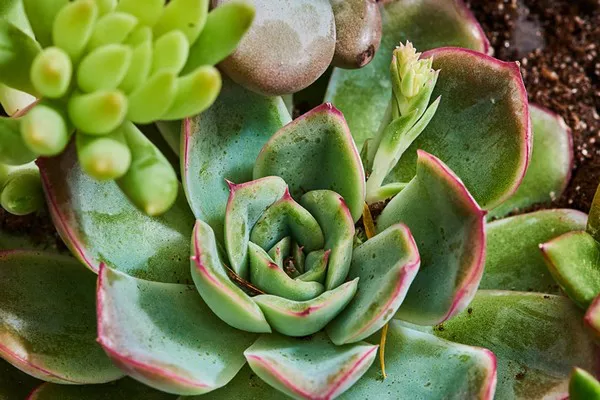Succulents are renowned for their ability to withstand arid conditions and store water in their leaves, stems, and roots. However, just like any other plant, succulents can suffer from inadequate watering. Underwatering is a common issue faced by succulent enthusiasts, often leading to poor growth and even plant death. Recognizing the signs of underwatered succulents is crucial for maintaining their health and vitality. In this article, we will explore the various symptoms that indicate an underwatered succulent and provide essential tips for proper watering.
Understanding Succulent Anatomy and Water Requirements
Before delving into the signs of underwatering, it is important to understand the unique anatomy and water requirements of succulents. Succulents have specialized structures known as “water storage tissues” that enable them to retain water for extended periods. These tissues can be found in the fleshy leaves, stems, or roots of different succulent species, allowing them to survive in arid environments.
Succulents have evolved to thrive in drought-like conditions, making them highly susceptible to overwatering. Their water needs are minimal compared to other plants, and excessive moisture can lead to root rot and other detrimental effects. Striking the right balance between underwatering and overwatering is paramount for succulent care.
Signs of Underwatered Succulents
Shriveling and Wrinkling: One of the most noticeable signs of an underwatered succulent is the appearance of shriveled or wrinkled leaves. When deprived of sufficient water, succulents will begin to draw moisture from their internal reserves, causing their leaves to lose plumpness and become dehydrated. The leaves may appear deflated and develop wrinkles or creases.
Leaf Drop: Underwatered succulents may shed their leaves as a survival mechanism. It is a protective response to conserve energy and minimize water loss. If you notice leaves dropping from your succulent, particularly those closest to the base of the plant, it could be an indication of insufficient watering.
Discoloration: Another sign of underwatered succulents is the presence of discoloration. The leaves may turn yellow or brown, especially at the tips or edges. This color change occurs due to the plant’s attempt to conserve water and redirect it to more vital parts. However, prolonged dehydration can lead to irreversible damage and eventual death of the plant.
Stunted Growth: Underwatering inhibits the growth of succulents. If you observe that your succulent has not grown significantly over time or its growth rate has noticeably slowed down, it is likely experiencing water stress. Limited water availability restricts the succulent’s ability to produce new leaves and stems, resulting in stunted growth.
Thickened or Leathery Leaves: When a succulent lacks water, it may respond by developing leaves that are thicker, tougher, or leathery in texture. This adaptation helps reduce water loss through evaporation and allows the plant to survive in challenging conditions. Such changes in leaf texture can serve as a clear indicator of underwatering.
Tips for Properly Watering Succulents
Now that we have explored the signs of underwatered succulents, let’s discuss some essential tips for watering these resilient plants:
Water Sparingly: Succulents thrive on neglect and prefer infrequent but deep watering. Allow the soil to dry out completely between waterings, and then water the plant thoroughly until the excess water drains out from the bottom of the pot. Avoid frequent light watering, as this can promote shallow root growth.
Observe the Soil Moisture: Before watering, check the moisture level of the soil by inserting your finger about an inch deep. If it feels dry at that depth, it’s time to water the succulent. Remember, it’s better to underwater than overwater.
Choose Well-Draining Soil: Succulents require well-draining soil to prevent waterlogged roots. Use a specialized succulent or cactus potting mix that is porous and allows excess water to escape quickly.
Consider Environmental Factors: Take into account environmental factors such as temperature, humidity levels, and air circulation when determining the watering frequency. Succulents may need more frequent watering in hot, dry climates compared to cooler regions.
Gradually Increase Watering: If you suspect your succulent is underwatered, gradually increase the frequency and amount of watering. Monitor the plant closely for signs of recovery or further adjustment needed.
Conclusion
Recognizing the signs of underwatered succulents empowers succulent enthusiasts to provide proper care and prevent potential damage or loss. By understanding the unique characteristics of succulents and adhering to appropriate watering practices, succulents can thrive and display their remarkable beauty in any setting. Remember, moderation is key when it comes to watering succulents, and observing the subtle cues from your plants will help ensure their long-term health and vitality.


